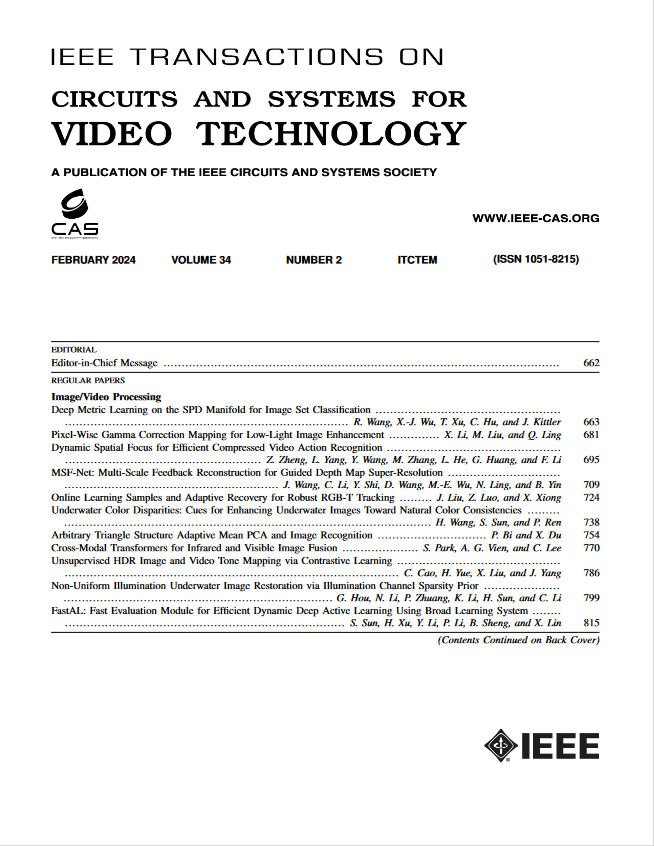基于相同量化矩阵的双JPEG压缩检测高判别特征提取
IF 8.3
1区 工程技术
Q1 ENGINEERING, ELECTRICAL & ELECTRONIC
IEEE Transactions on Circuits and Systems for Video Technology
Pub Date : 2025-01-07
DOI:10.1109/TCSVT.2025.3526838
引用次数: 0
摘要
在图像取证中,检测具有相同量化矩阵的双重JPEG压缩是一项关键而又具有挑战性的任务。现有的方法往往不能准确识别和充分利用单压缩和双压缩图像之间的差异,导致检测性能不理想,特别是在低质量因子(qf)的情况下。为了解决这一问题,提出了一种提取高判别特征的新方法。首先,我们设计了一种新的错误块分类方法,将错误块分为稳定错误块、舍入错误块和截断错误块。这种分类方法可以更准确地识别teb,这是低qf情况下错误图像中最具歧视性的块。然后,在对reb和teb进行理论分析的基础上,推导出直接导致两类图像差异的内在变量,为检测提供更本质的特征。最后,从reb、teb和平面块中提取了一些25维的高度判别特征。实验结果表明,该方法在低qf图像处理上的性能优于目前的一些研究成果。本文章由计算机程序翻译,如有差异,请以英文原文为准。
Extracting High-Discriminative Features for Detecting Double JPEG Compression With the Same Quantization Matrix
Detecting double JPEG compression with the same quantization matrix is a crucial yet challenging task in image forensics. Existing methods often fail to accurately identify and fully exploit the differences between singly and doubly compressed images, resulting in unsatisfactory detection performance, especially for cases with low quality factors (QFs). To address this issue, a novel method is proposed to extract highly discriminative features for performance enhancement. First, we design a new error block classification method that categorizes error blocks into stable error blocks, rounding error blocks (REBs), and truncation error blocks (TEBs). This classification method enables more accurate identification of TEBs, which are the most discriminative blocks in error images for cases with low QFs. Then, based on the theoretical analysis of REBs and TEBs, an intrinsic variable that directly leads to the differences between two classes of images is derived, providing more essential characteristics for the detection. Finally, a number of 25-dimensional highly discriminative features are extracted from REBs, TEBs, and flat blocks. Experimental results demonstrate that the proposed method outperforms several state-of-the-art works, especially on images with low QFs.
求助全文
通过发布文献求助,成功后即可免费获取论文全文。
去求助
来源期刊
CiteScore
13.80
自引率
27.40%
发文量
660
审稿时长
5 months
期刊介绍:
The IEEE Transactions on Circuits and Systems for Video Technology (TCSVT) is dedicated to covering all aspects of video technologies from a circuits and systems perspective. We encourage submissions of general, theoretical, and application-oriented papers related to image and video acquisition, representation, presentation, and display. Additionally, we welcome contributions in areas such as processing, filtering, and transforms; analysis and synthesis; learning and understanding; compression, transmission, communication, and networking; as well as storage, retrieval, indexing, and search. Furthermore, papers focusing on hardware and software design and implementation are highly valued. Join us in advancing the field of video technology through innovative research and insights.

 求助内容:
求助内容: 应助结果提醒方式:
应助结果提醒方式:


